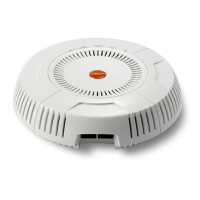Wireless Access Point
Configuring the Wireless AP 281
Management page (i.e., they are configured per SSID rather than in
Global Settings).
EasyPass Onboarding facilitates “Bring Your Own Device (BYOD)”
usage. XMS-Cloud’s onboarding lets you create user accounts in
advance, and a user can self-register a number of devices simply by
connecting to the wireless network from each device. Each user
account is assigned a User-Preshared Key (U-PSK) to be used for
registering each device and accessing the wireless network.
U-PSK should only be enabled for an SSID that is assigned to an
XMS-Cloud EasyPass Onboarding portal. XMS-Cloud will also
automatically generate a unique Preshared Key for each user account.
U-PSK Cache Timeout (minutes)—this local cache on the AP stores
the station’s preshared key that was authenticated by the cloud.
The cache saves time the next time that the station associates to the
AP, since there is no need to query the U-PSK cloud server again.
U-PSK Cache Timeout specifies how long the cached entry is used
before it must be re-validated.
U-PSK Server Error specifies what to do if the U-PSK server in the
cloud cannot be accessed to check station authentication status. You
may Allow station traffic if the server is unavailable, or Block it.
• To configure Active Directory settings, see “Active Directory” on
page 259).
• The External RADIUS and Accounting settings are configured in the
same way as for an external RADIUS server (see “Procedure for
Configuring an External RADIUS Server” on page 254). Note that
external RADIUS servers may be specified using IP addresses or
domain names.
14. Roaming: For this SSID, select whether to enable fast roaming between
IAPs or APs at L2&L3 (Layer 2 and Layer 3), at L2 (Layer 2 only), or
disable roaming (Off). You may only select fast roaming at Layers 2 and 3
if this has been selected in Global Settings. See “Understanding Fast
Roaming” on page 311.

